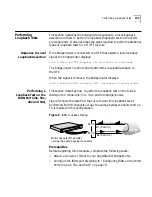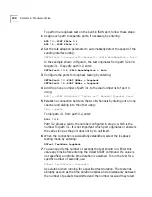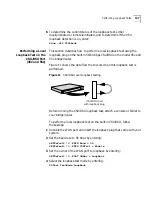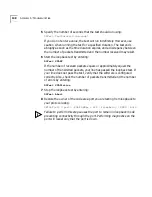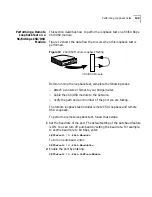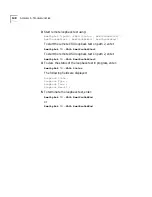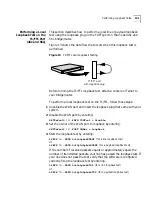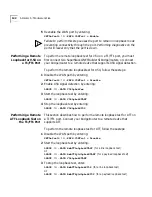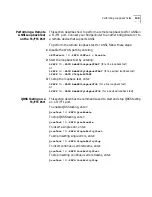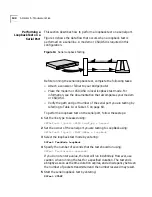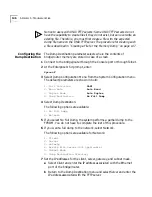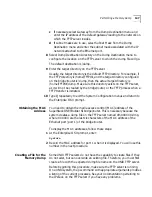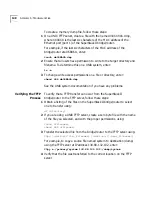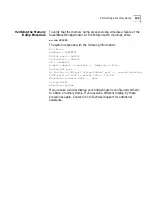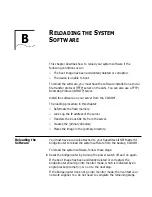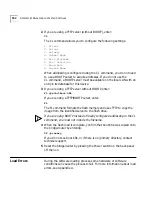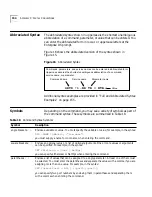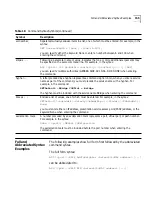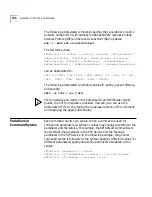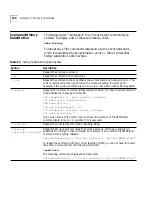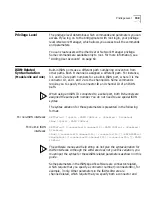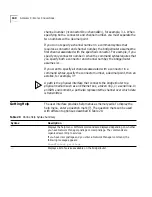
Performing a Memory Dump
147
c
If necessary, select Gateway from the Dump Destination menu and
enter the IP address of the default gateway leading to the network on
which the TFTP server resides.
d
If subnet masks are in use, select Subnet Mask from the Dump
Destination menu and enter the subnet mask associated with the IP
network attached to the Ethernet port.
8
Select Dump Destination Directory on the Dump Destination menu to
configure the location on the TFTP server to which the dump file will go.
The default destination is /dump.
9
Enter the target directory on the TFTP server.
Usually, the target directory is the default TFTP directory. For example, if
the TFTP directory is /home/TFTPdir, and the target directory configured
on the bridge/router is /dump, then the actual target directory is
/home/TFTPdir/dump. Make sure this directory exists on the TFTP server,
as it will not be created by the bridge/router, or the TFTP process when a
TFTP transfer is initiated.
10
Type Q repeatedly to exit the System Configuration menus and return to
the Enterprise OS # prompt.
Obtaining the MAC
Address
You need to obtain the media access control (MAC) address of the
SuperStack II NETBuilder SI bridge/router. This is necessary because the
system creates a dump file on the TFTP server named dmXXXXXX.dmp,
where XXXXXX are the last six characters of the MAC address of the
Ethernet port (port 1) of the bridge/router.
To display the MAC addresses, follow these steps:
1
At the Enterprise OS # prompt, enter:
SysInfo
2
Record the MAC address for port 1 when it is displayed. You will use this
number in the next procedure.
Creating a File for the
Memory Dump
Some UNIX TFTP servers do not have the capability to create files if they
do not exist, but can overwrite an existing file. Therefore, you must first
create a file with the expected dump file name on the UNIX TFTP server.
Before beginning this procedure, make sure the TFTP server is running.
On a UNIX system, the ps command with appropriate arguments provides
a listing of the current processes. See your documentation pertaining to
the IP stack on the TFTP server if you have any problems.
Summary of Contents for NETBuilder SI
Page 6: ......
Page 22: ...22 CHAPTER 1 FEATURES AND SPECIFICATIONS...
Page 28: ...28 CHAPTER 2 USING THE BRIDGE ROUTER IN YOUR NETWORK...
Page 40: ...40 CHAPTER 3 INSTALLING THE HARDWARE...
Page 52: ...52 CHAPTER 4 INSTALLING OR REMOVING AN INTERFACE MODULE...
Page 78: ...78 CHAPTER 6 BASIC CONFIGURATION OF PORTS AND PATHS...
Page 100: ...100 CHAPTER 7 ADVANCED CONFIGURATION OF PORTS AND PATHS...
Page 120: ...120 CHAPTER 9 CUSTOMIZING YOUR SOFTWARE...
Page 150: ...150 APPENDIX A TROUBLESHOOTING...
Page 162: ...162 APPENDIX C SYNTAX CONVENTIONS...
Page 196: ...196 APPENDIX E PROVISIONING YOUR ISDN LINE...
Page 202: ......
Page 210: ...210 INDEX...
Page 212: ......

